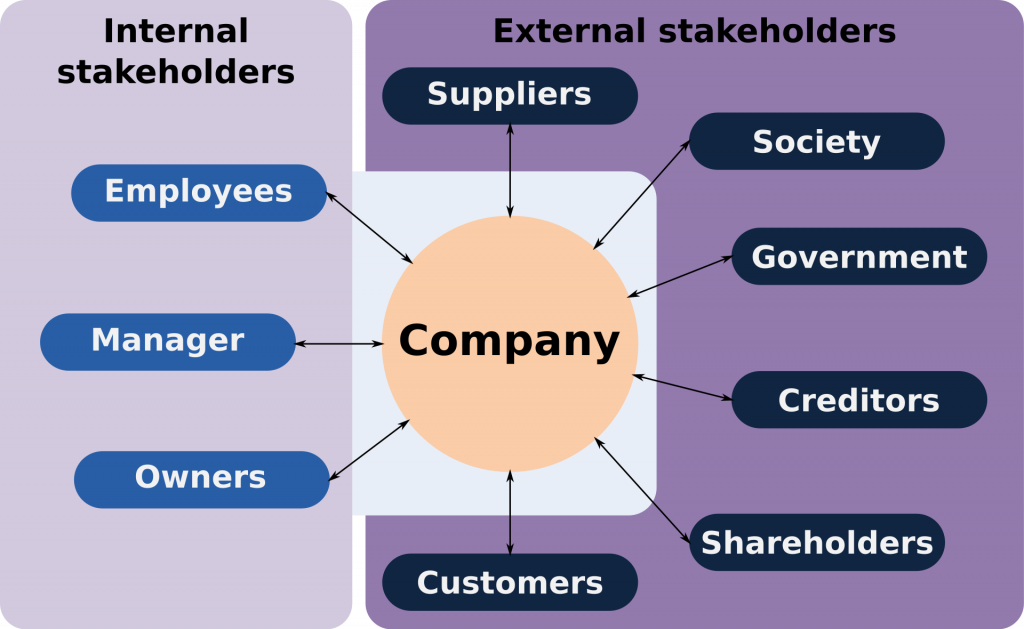Written by our Co-Founder & Master Tessa de Flines
I recently spoke to someone who had been hired in a leadership role at a startup who said “Our founders have no clue about stakeholder management!”. They said this in the context of relationships with investors. This triggered me to do some more asking around, and this statement was confirmed again and again.
Having spent many years running projects at a large multinational, stakeholder management was pretty much my job description. It stopped being something I consciously thought about, but was ingrained in everything I did. Because if I didn’t, I wouldn’t get anywhere. And this holds true for a startup and scaleup as well, engaging with your stakeholders is crucial for your success. Experienced entrepreneurs know this, but first time founders often don’t realize it until it’s too late or do realize but don’t have a plan to do it.
As a founder, you are so focused on running and building your business that you can easily get trapped in your own bubble and forget those around you. Despite my many years of stakeholder management experience, I catch myself doing this as well. Additionally, there are so many skills you need to learn for all aspects of your business and many founders may not know how to go about managing stakeholders. This inspired me to write this article with basic steps and some useful resources to hopefully help other founders to understand the importance of and incorporate stakeholder management in their daily work.
But first, let’s answer some important basic questions:
- What is a stakeholder? A party that has an interest in a company and can either affect or be affected by the business. (Investopedia)
- Who are stakeholders? The primary stakeholders in a typical company are its investors, employees, customers, and suppliers. However, with the increasing attention on corporate social responsibility, the concept has been extended to include communities, governments, and trade associations.(Investopedia)
- What is stakeholder management? Stakeholder management is the process by which you communicate with and engage your company’s stakeholders, prioritizing them by importance and ensuring that all stakeholders feel valued. (Visible VC)
Why should you manage stakeholders?
As mentioned earlier, stakeholders can have a significant impact on your business, both positively and negatively. Proactively keeping stakeholders informed on your progress can create buzz and visibility around your company and it also helps to turn your stakeholders into your ambassadors. And it shouldn’t always only be the good news. You should also proactively, honestly and early as possible share bad news or challenges with certain stakeholders. This gives them the chance to help you overcome hurdles and also prevents unpleasant surprises later on.
So what steps should you take to manage stakeholders?
1. Identify your stakeholders
If we think about the stakeholders of startups and scaleups specifically, a few additional ones come to mind like your board, other advisors, partners and creditors. Your first step in stakeholder management should be to make a list of who your stakeholders really are. Here is an article to help get you started.
2. Understand your stakeholders
Some stakeholders are more important than others and in order to define and prioritize your stakeholder management activities, you need to get a deep understanding of the power and interest of each of your stakeholders. Sometimes you can do this at an organization level, but sometimes you may need to do it at an individual level. For example, if you are trying to land a big customer, different people in their organization can have different levels of influence and decision making power. This article has a good list of questions you can answer to help you better understand your stakeholders (under the section Stakeholder Analysis).
3. Prioritize your stakeholders
Now that you better understand your stakeholders, you can start prioritizing them by plotting them on a matrix based on their level of power and their level of interest. Based on the input you created in the previous step, score each stakeholder as low, medium or high for power and interest. By doing this, you can create several groups of stakeholders and prioritize them. Here are two examples of stakeholder analyses you can use:
4. Plan how you will engage and manage your stakeholders
For each of your prioritized stakeholder groups, determine when and how you will engage with them based on their needs. Your activities for high power-high interest stakeholders should for example be more intensive than for medium power-medium interest stakeholders. This article includes some nice examples of what you can do for different stakeholder groups and this article shares some basics you should have in place. Put these activities in a simple plan with types of activities per stakeholder group, channels, frequency and owners. Here are some free templates to help you with this.
5. Maintain your stakeholder relationships
Making a plan is one thing, but you also need to implement it. Your stakeholder management activities should be embedded in your and your team’s regular work, action plans and in the company culture. Mark them in your calendar, put them on your meeting agendas or do whatever else needed to make sure that your stakeholder management activities don’t fade into the background again.
By following these simple steps, you can make stakeholder management a normal part of managing your business and make sure you and your stakeholders benefit from each other’s added value.
Need help? Feel free to contact me at tessa@mastersofscale.nl.

